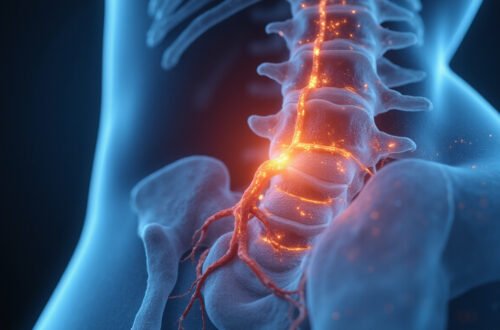Nerve mobilization is an effective therapeutic technique used by physical therapists and healthcare professionals to relieve pain and improve mobility. By gently mobilizing the nerves through specific movements and exercises, nerve mobilization helps reduce nerve irritation, enhance circulation, and restore normal nerve function. If you’re experiencing pain, numbness, or restricted movement due to nerve-related issues, understanding and applying nerve mobilization techniques could be a game-changer in your recovery journey.
What Is Nerve Mobilization?
Nerve mobilization, also known as neural mobilization, involves exercises and manual therapy designed to restore the normal mobility and elasticity of nerves. When nerves become entrapped, compressed, or irritated, they can cause symptoms such as pain, tingling, numbness, or weakness. This condition is often associated with issues like sciatica, carpal tunnel syndrome, or radiculopathy.
The goal of nerve mobilization is to gently stretch and glide the nerve along its pathway to reduce adhesions and improve neural tissue health. By doing so, nerve mobilization facilitates pain relief and helps restore functional movement, allowing you to perform daily activities with less discomfort.
How Does Nerve Mobilization Work?
Nerves, unlike muscles and joints, need to move freely within their sheath and surrounding tissues. When there is nerve compression or inflammation, mobility is restricted, leading to pain and impaired function. Nerve mobilization techniques focus on the following:
- Reducing nerve tension: By performing controlled movements, the nerve is allowed to slide and stretch within its structures.
- Improving blood flow: Enhanced circulation nourishes the nerve and promotes healing.
- Decreasing sensitivity: Gradual mobilization helps desensitize irritated nerves, reducing pain signals.
- Restoring function: Improved nerve mobility means better communication between the nervous system and muscles.
These benefits collectively contribute to alleviating symptoms and improving overall mobility.

Common Nerve Mobilization Techniques
Several techniques are employed in nerve mobilization therapy, tailored to the specific nerve involved and the patient’s condition. Below are some commonly used methods:
1. Neural Gliding Exercises
Neural gliding, or nerve flossing, involves performing gentle, repetitive movements that slide the nerve along its pathway without excessive tension. An example includes the median nerve glide, which targets the arm nerves:
- Extend your wrist and fingers.
- Slowly bend and straighten your elbow.
- Repeat for several cycles, feeling a mild stretch but no sharp pain.
2. Sliders and Tensioners
These terms describe two different types of nerve mobilization:
- Sliders: Move two joints in opposite directions, creating a sliding motion of the nerve without significant stretch.
- Tensioners: Involve elongating the nerve bed by moving joints that stretch the nerve, combining movements to increase tension on the nerve.
A therapist decides which technique suits your condition best, using sliders for early stages and tensioners for progressive mobilization.
3. Manual Therapy by Professionals
Physical therapists may perform hands-on mobilization techniques using gentle traction and nerve flossing to maximize nerve mobility. These approaches are often combined with other therapies such as stretching and strengthening exercises.
Benefits of Nerve Mobilization
Incorporating nerve mobilization into a rehabilitation program offers multiple benefits:
- Pain Relief: Helps reduce nerve irritation and associated pain.
- Improved Range of Motion: Frees up nerve movement, contributing to better joint mobility.
- Decreased Muscle Weakness: Restores nerve function, which supports muscle strength.
- Enhanced Healing: Stimulates blood flow to promote nerve tissue repair.
- Prevention of Chronic Conditions: Regular mobilization may prevent long-term nerve damage and fibrosis.
Step-by-Step Guide to a Basic Nerve Mobilization Exercise at Home
Before starting any nerve mobilization exercises on your own, consult with a healthcare professional to determine suitability. Below is a basic example targeting the sciatic nerve:
- Begin sitting on a sturdy chair.
- Extend your affected leg straight out so your heel rests on the floor and toes point upward.
- Slowly lean forward at the hips, keeping your back straight, until you feel a gentle stretch along the back of your thigh.
- Hold the position for 5 seconds, then slowly return to the starting posture.
- Repeat 10 times, twice daily.
This simple exercise encourages sciatic nerve gliding and can help lessen nerve tension.
When Should You Avoid Nerve Mobilization?
Although nerve mobilization is generally safe, certain situations warrant caution or avoidance:
- Acute nerve injury or inflammation
- Severe pain with nerve movement
- Recent surgery involving nerves or joints
- Signs of neurological damage such as severe weakness or loss of sensation
Always seek professional evaluation to ensure nerve mobilization is appropriate.
Frequently Asked Questions (FAQ)
Q1: What conditions benefit most from nerve mobilization?
A1: Conditions like sciatica, carpal tunnel syndrome, lumbar radiculopathy, and peripheral nerve entrapments are often effectively managed with nerve mobilization techniques.
Q2: How soon can I expect to see results from nerve mobilization exercises?
A2: Many patients experience symptom relief within a few sessions, but the timeline varies depending on the severity and chronicity of the nerve condition.
Q3: Can nerve mobilization be combined with other treatments?
A3: Yes, nerve mobilization often complements physical therapy, stretching, strengthening exercises, and pain management strategies for comprehensive care.
Expert Insight and Research
Research supports the efficacy of nerve mobilization in reducing pain and improving function. A study published in the Journal of Orthopaedic & Sports Physical Therapy found that nerve mobilization techniques significantly improved symptoms in patients with lumbar radiculopathy compared to standard care (source).
Conclusion: Take Charge of Your Nerve Health Today
Nerve mobilization is a powerful tool to relieve pain and enhance mobility by addressing the root cause of nerve irritation. Whether you are dealing with sciatic nerve pain, carpal tunnel, or other nerve-related discomfort, incorporating nerve mobilization techniques can accelerate your healing and improve your quality of life. Always consult a healthcare professional to develop a personalized plan tailored to your needs.
If you’re ready to regain your mobility and live pain-free, consider reaching out to a physical therapist trained in nerve mobilization. Start your path to recovery and take control over your nerve health today!






